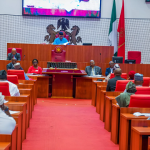The African Continental Free Trade Area (AfCFTA), launched in 2021, was hailed as a game-changer for boosting intra-African trade. Yet, four years later, progress has been slower than anticipated. Challenges such as poor infrastructure, tariff disputes, and weak border coordination still limit its impact.
According to the African Union (AU), intra-African trade currently stands at about 15%, far below Europe’s 60% and Asia’s 50%. Nigeria, Africa’s largest economy, plays a crucial role, but its frequent border closures and protectionist policies have raised concerns among smaller economies.
Still, progress is visible. The Pan-African Payment and Settlement System (PAPSS) is easing cross-border payments, and new transport corridors are under development. Analysts say if fully implemented, AfCFTA could lift over 30 million Africans out of extreme poverty by 2035.
Experts urge African governments to align national trade policies with the AfCFTA framework. Without this, the continent risks missing out on the benefits of one of the world’s largest trade zones. For now, optimism remains, but patience is wearing thin among businesses eager for tangible results.








